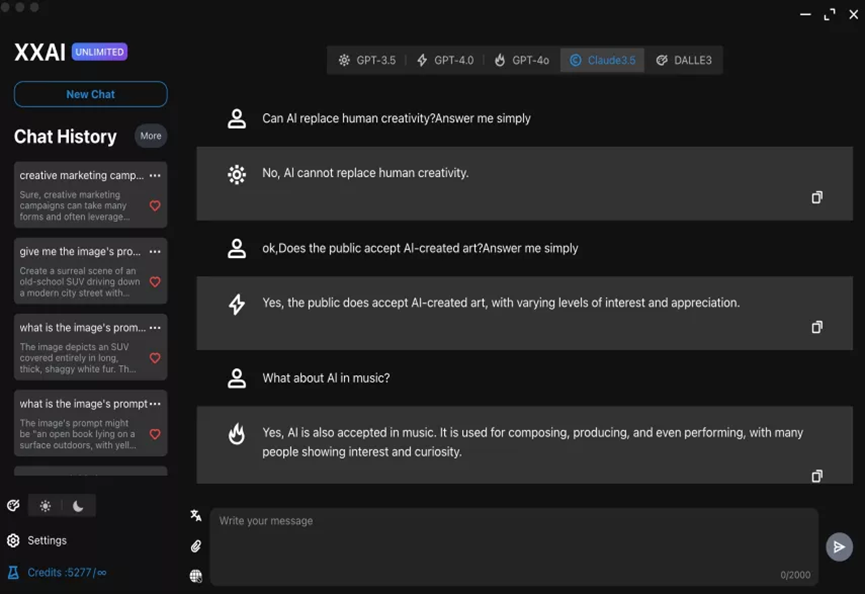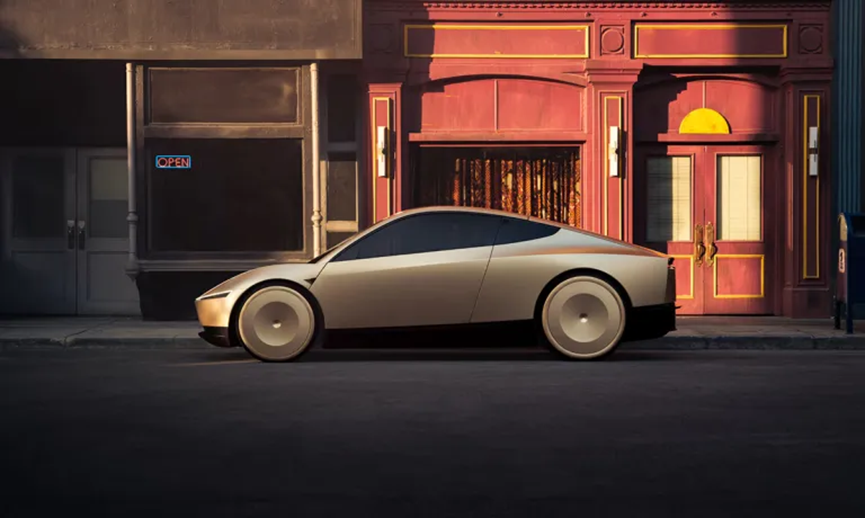特斯拉推出Cybercab:迈向自动驾驶未来的一大步

特斯拉备受期待的**Cybercab**,也被称为Robotaxi,已由首席执行官埃隆·马斯克在名为“We, Robot”的盛大活动中正式揭幕。计划在2027年开始生产,**Cybercab**的目标是以不到30,000美元的价格和每英里仅需0.40美元的运营成本,重塑城市交通。然而,特斯拉在推动无驾驶员**Cybercab**时代的同时,还面临着完善技术、应对复杂法规和建设充电及维护基础设施等重大挑战。
(https://x.com/i/status/1844573295510728857)
在迅速发展的人工智能领域,**XXAI**正崭露头角。通过整合GPT-4、DALL.E3和Claude 3.5等顶尖模型,XXAI以每月仅9.9美元的起价向用户提供强大的AI功能。这一做法使更广泛的受众能够体验先进AI的魅力,展示其在写作、图像生成、翻译等方面的强大优势,为各行业注入创新动力。

技术与法规挑战
尽管**Cybercab**的发布令人兴奋,但仍面临重大障碍。特斯拉需要完善技术、确保符合监管标准,并开发必要的充电和维护基础设施。行业专家对特斯拉的雄心勃勃的时间表和技术的成熟度表示怀疑。Bores Group的董事詹姆斯·博尔指出,**Cybercab**的监管前景令人担忧,“特斯拉的**Cybercab**似乎没有任何变革性或不同之处,除了它缺乏手动控制,所以在世界大部分地区是非法的。”
行业影响与潜在变化
尽管如此,许多专家认为,特斯拉的**Cybercab**和Robovan的推出可能会根本性地改变交通和物流行业。其自主驾驶能力和低运营成本可能会彻底改变最后一公里配送和打车服务。“这些车辆声称将通过提供更经济的交通方式来减少拥堵和停车需求,”Reclaim247的联合创始人安德鲁·弗兰克斯表示。
此外,这些**Cybercab**可能帮助无法驾驶的群体,如老年人和残障人士,管理日常活动。这种转变还可能影响个人汽车拥有率,促使更多人选择打车服务而非购买自己的汽车,从而通过减少排放促进更清洁的环境。
未来设计与实用性
**Cybercab**在设计上与特斯拉现有车型大相径庭。不同于不锈钢的Cybertruck,**Cybercab**采用涂漆铝合金车身面板,以降低生产成本。其未来感的外观包括前后灯条,类似于Cybertruck,尤其是缺乏方向盘和踏板,突显其完全自主的特性。
内饰方面,**Cybercab**可以容纳两名成年人,配备宽敞的垫子座椅和简约设计。20.5英寸的中控显示屏主导仪表盘,为乘客提供行程信息和娱乐选项,而其蝴蝶门设计则增添了一丝戏剧性——尽管也引发了对维护和寒冷天气功能的担忧。
在技术方面,马斯克宣布**Cybercab**将配备先进的人工智能(AI)系统。这一下一代自主驾驶平台增强了特斯拉现有的技术,采用类似公司AI4系统的摄像布局,但计算能力更强。特斯拉声称其AI已针对多种驾驶场景进行了训练。

雄心勃勃的主张与行业怀疑
在发布会上,特斯拉宣称**Cybercab**等车辆的安全性将比人类驾驶的安全性高出10到30倍。然而,行业对其不到30,000美元的预期价格感到怀疑。特斯拉计划向个人消费者和车队运营商提供**Cybercab**。此外,还引入了“Cybercab Hub”概念——这些设施将用于充电和清洗,配备感应充电和机器人清洗系统。
博尔指出,特斯拉在技术挑战上与那些已积累车辆安全性和有效性数据的竞争对手相比,面临着重大挑战。与特斯拉不同,这些竞争服务仍保留手动控制,并在自主车辆中部署远程安全驾驶员,以便在出现故障时接管。
新车型与额外创新
活动中还展示了Robovan,这是一种更大的自主车辆,能够运输多达20名乘客,或改装用于货物运输。Robovan与**Cybercab**的未来设计相似,可以改作校车或房车,进一步扩大特斯拉在交通领域的影响力。
除了车辆创新,特斯拉还介绍了其Optimus人形机器人,活动现场与参会者进行了互动。这些机器人展示了基本的移动能力,并提供饮料,暗示它们未来可能作为家庭任务或伴侣的自主助手,其预估价格在20,000到30,000美元之间。
(https://x.com/i/status/1844582394239533433)
结论
生产计划最迟在2027年开始,特斯拉显然设定了雄心勃勃的目标。随着技术完善和监管应对的关键时刻来临,所有目光都将聚焦在埃隆·马斯克及其团队身上,期待他们将这一愿景转化为现实。随着赌注的提高和转型承诺的迫近,**Cybercab**可能预示着城市交通的未来即将到来。